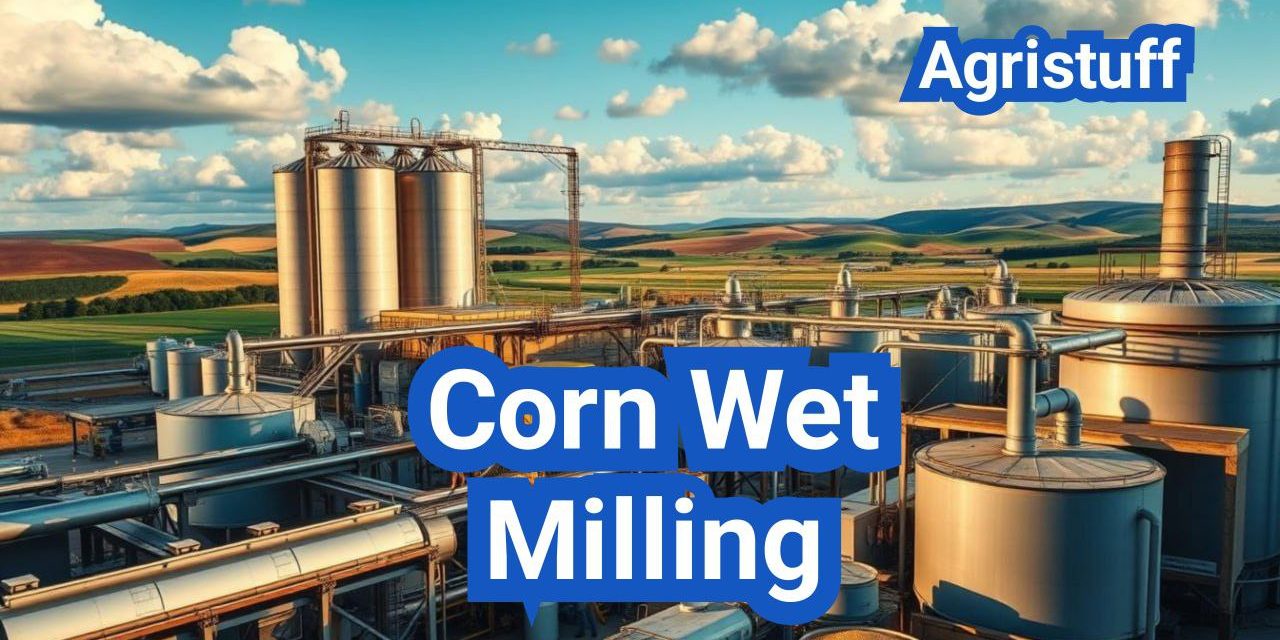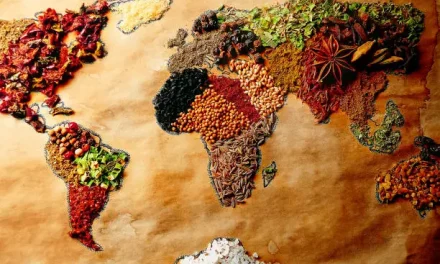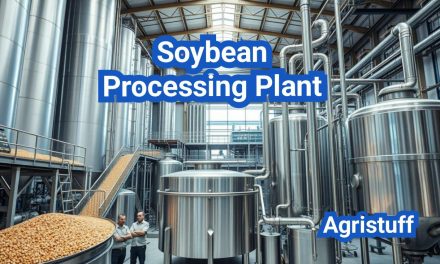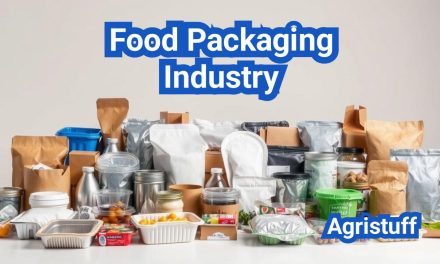The corn wet milling process is a significant industry in the United States, converting corn into various valuable products such as starch, sweeteners, and ethanol.
This process is crucial for producing a range of materials used across different sectors, including food, beverage, and industrial applications. Starch manufacturing and glucose syrup production are key components of this industry, providing essential ingredients for numerous consumer goods.
The importance of corn wet milling lies in its versatility and the wide range of products it yields, including HFCS, corn oil, and gluten meal, which are used in various industrial and food applications.
Key Takeaways
- The corn wet milling industry is a significant sector in the U.S.
- It produces a variety of products including starch, sweeteners, and ethanol.
- Starch manufacturing and glucose syrup production are key aspects.
- The industry supports various sectors including food, beverage, and industrial applications.
- Products like HFCS, corn oil, and gluten meal have diverse uses.
The Fundamentals of Corn Wet Milling
With its roots dating back several decades, corn wet milling has evolved into a crucial sector within the U.S. food industry. This process involves the separation of corn into its various component parts, such as starch, protein, and fiber, to produce a wide range of products.
Definition and Historical Development
Corn wet milling is defined as a process that uses water to separate corn into its constituent parts. The history of corn wet milling dates back to the early 20th century when it was first developed as a more efficient alternative to dry milling. Over the years, advancements in technology have significantly improved the efficiency and yield of the wet milling process.
The development of corn wet milling has been influenced by various factors, including technological innovations and changing market demands. The introduction of new equipment and techniques has enabled producers to increase productivity and reduce costs. Today, corn wet milling is a sophisticated process that plays a vital role in the production of various food and industrial products.
Economic Significance in the U.S. Food Industry
The corn wet milling industry is a significant contributor to the U.S. economy, with the production of corn products generating substantial revenue. According to the NAICS classification (NAICS311221), corn wet milling is categorized under the wet corn milling industry, which is a vital part of the broader food manufacturing sector.
The economic impact of corn wet milling is multifaceted. It not only provides employment opportunities but also supports the agricultural sector by creating demand for corn. The industry’s reliance on corn as a raw material has a direct impact on farmers and the overall agricultural economy. Some key economic benefits of corn wet milling include:
- Job creation in both rural and urban areas
- Support for the agricultural sector through corn demand
- Contribution to the national GDP through the production of high-value corn products
The industry adheres to strict grain standards for wet milling, ensuring the quality of the final products. As the demand for corn products continues to grow, the corn wet milling industry is poised to remain a significant player in the U.S. food industry.
Corn Wet Milling vs. Dry Milling: Key Differences

Understanding the differences between corn wet milling and dry milling is crucial for determining the most suitable method for producing various corn products. The corn processing industry employs these two distinct methods to produce a range of products, from food ingredients to industrial materials.
Process Comparison
The primary difference between corn wet milling and dry milling lies in the initial processing steps. Corn wet milling involves soaking corn in water to soften the kernels, making it easier to separate the various components. This process allows for the production of high-quality starch, sweeteners, and other valuable co-products.
In contrast, dry milling does not involve soaking the corn in water. Instead, it relies on mechanical grinding to break down the corn into its various components. Dry milling is generally used to produce cornmeal, flour, and other dry products.
Product Yield and Quality Differences
The choice between wet and dry milling significantly affects the product yield and quality. Wet milling produces a higher yield of starch and other valuable co-products due to the efficient separation of corn components. The quality of these products is also generally higher because of the gentle processing conditions.
| Product | Wet Milling | Dry Milling |
|---|---|---|
| Starch | High-quality starch with high yield | Limited starch production |
| Sweeteners | Variety of sweeteners, including high fructose corn syrup | Not typically produced |
| Corn Oil | High-quality corn oil | Limited oil production |
| Cornmeal/Flour | Not the primary product | Primary products |
The table above highlights the key differences in product yield and quality between corn wet milling and dry milling. Understanding these differences is essential for producers to decide which method best suits their production needs.
The Corn Wet Milling Process Step-by-Step
Understanding the corn wet milling process is crucial for appreciating how corn is converted into multiple end products. This process involves several key stages that transform raw corn into valuable commodities such as starch, sweeteners, and various industrial products.
Corn Receiving and Cleaning
The first step in the corn wet milling process is the receiving and cleaning of corn. Upon arrival, corn is inspected for quality and then cleaned to remove foreign materials such as dust, dirt, and other debris. This step is crucial for ensuring the quality of the final products and is typically done using a combination of screening and aspiration techniques.
Steeping Process
After cleaning, the corn is subjected to a steeping process. Steeping involves soaking the corn in water or a dilute solution of sulfur dioxide to soften the kernels. This process facilitates the separation of the corn’s components by making the kernels more pliable and easier to grind. The steeping process can last from 30 to 50 hours, depending on the specific requirements of the mill.
The steepwater, a by-product of this process, is rich in nutrients and is often used as a component in animal feed or as a fertilizer. The steeping process is a critical step that affects the efficiency of subsequent operations.
Germ Separation and Recovery
Following steeping, the corn is coarsely ground to release the germ. The germ is then separated from the rest of the kernel through a process of centrifugation or flotation. The recovered germ is used to produce corn oil, a valuable by-product of the wet milling process.
The separation of the germ is an important step as it not only yields corn oil but also facilitates the production of other products by removing a component that could interfere with their quality.
Fiber Separation
After germ separation, the remaining kernel components undergo further processing to separate the fiber from the starch and protein. This is typically achieved through a series of grinding and screening operations. The fiber, once separated, can be used as a component in animal feed or further processed into other products.
The efficiency of fiber separation is crucial for the overall yield and quality of the final products. Advanced technologies and equipment are employed to maximize the recovery of valuable components.
Comprehensive Corn Wet Milling Process Flow Diagram

A comprehensive corn wet milling process flow diagram illustrates the various stages involved in converting corn into valuable products such as starch, sweeteners, and corn oil. This diagram is essential for understanding the complexity and efficiency of the corn wet milling process.
Process Flow Diagram Explanation
The corn wet milling process begins with corn receiving and cleaning, followed by steeping, where the corn is soaked in water to facilitate the separation of its components. The steeped corn then undergoes germ separation, fiber separation, and finally, the recovery of starch, protein, and other valuable products.
The process flow diagram can be broken down into several key stages:
- Corn receiving and cleaning
- Steeping
- Germ separation and recovery
- Fiber separation
- Starch and protein recovery
Critical Control Points in the Process
Critical control points in the corn wet milling process include the steeping temperature and duration, the efficiency of germ and fiber separation, and the quality control measures for starch and protein recovery. These control points are crucial for ensuring the quality and yield of the final products.
| Process Stage | Critical Control Points | Impact on Final Products |
|---|---|---|
| Steeping | Temperature, duration | Efficiency of component separation |
| Germ Separation | Separation efficiency | Quality and yield of corn oil |
| Starch and Protein Recovery | Centrifugation efficiency, quality control | Purity and yield of starch and protein |
By understanding and optimizing these critical control points, corn wet milling operations can improve their efficiency, reduce costs, and enhance the quality of their products.
Essential Equipment for Corn Wet Milling Operations
The corn wet milling process relies heavily on specialized equipment to efficiently separate corn into its various components.
Corn wet milling involves several critical steps, each requiring specific machinery designed to optimize the extraction of starch, sweeteners, and other valuable products. The quality and efficiency of these processes depend significantly on the type and condition of the equipment used.
Steeping Tanks and Conditions
Steeping tanks are crucial for the initial step of corn wet milling, where corn kernels are soaked in water to soften them. The conditions within these tanks, including temperature and sulfur dioxide concentration, are carefully controlled to facilitate the steeping process.
- Steeping Tanks: Large vessels where corn is soaked.
- Temperature Control: Maintaining optimal temperature for steeping.
- Chemical Conditioning: Use of sulfur dioxide to enhance steeping.
Grinding and Separation Equipment
After steeping, corn is processed through grinding and separation equipment to release its components. This includes:
- Attrition Mills: Used for grinding corn into finer particles.
- Impact Mills: Further reduce particle size.
- Screening Equipment: Separates particles based on size.
Centrifuges and Hydrocyclones
Centrifuges and hydrocyclones are vital for separating the different components of corn based on density and size.
- Centrifuges: Separate liquids and solids.
- Hydrocyclones: Used for starch-gluten separation.
Drying and Evaporation Systems
The final products from corn wet milling often require drying or evaporation to achieve the desired moisture content.
- Dryers: Various types, including rotary and flash dryers.
- Evaporators: Concentrate liquids by removing water.
In conclusion, the efficiency and product quality of corn wet milling operations are directly influenced by the quality and appropriateness of the equipment used. Advances in equipment design and operation continue to improve the overall process.
Primary Products of Corn Wet Milling

The corn wet milling process yields a diverse range of products that are crucial to various industries. These products are derived through a complex series of steps that involve steeping, grinding, and separating the components of corn.
Starch Production and Refinement
Starch is one of the primary products of corn wet milling, accounting for a significant portion of the industry’s output. The starch manufacturing process involves several stages, including steeping, grinding, and centrifugation. The resulting starch is then refined to meet the required standards for various applications.
The refined starch is used in a variety of industries, including food, paper, and textiles. Its versatility and functionality make it a valuable commodity in the market.
Corn Syrup and Sweeteners Manufacturing
Corn syrup and sweeteners are another key product of corn wet milling. The production of glucose syrup and High Fructose Corn Syrup (HFCS) involves the enzymatic conversion of starch into sugars. This process is critical for the manufacture of various sweeteners used in the food and beverage industry.
The HFCS manufacturing process is particularly significant, as it produces a sweetener that is widely used in soft drinks and other food products. The quality and consistency of HFCS are crucial for its application in various industries.
Corn Oil Extraction Techniques
Corn oil is extracted from the germ of the corn kernel during the wet milling process. The extraction techniques involve mechanical pressing and solvent extraction. The resulting corn oil is used in cooking, food production, and biofuel manufacturing.
The quality of corn oil is an important consideration, as it affects its suitability for various applications. The industry employs various refining techniques to ensure that the corn oil meets the required standards.
Corn Gluten Meal and Feed Production
Corn gluten meal is a protein-rich product derived from corn wet milling. It is used as a feed ingredient in the animal feed industry, particularly for poultry and livestock. The production of corn gluten meal involves the separation of protein from other components of the corn kernel.
The quality of corn gluten meal is critical for its application in animal feed. The industry ensures that the product meets the required nutritional standards for various animal species.
| Product | Description | Application |
|---|---|---|
| Starch | Refined starch derived from corn | Food, paper, textiles |
| Corn Syrup | Sweetener derived from starch | Food and beverage |
| Corn Oil | Oil extracted from corn germ | Cooking, food production, biofuel |
| Corn Gluten Meal | Protein-rich feed ingredient | Animal feed |
As highlighted by industry experts, “The diversity of products derived from corn wet milling underscores the complexity and value of this process.”
The corn wet milling industry is a vital component of the agricultural processing sector, providing a range of products that are essential to various industries.
Starch Modification Techniques and Applications

Starch modification is a critical process in the corn wet milling industry, enabling the production of starch with tailored properties for various industrial applications. The versatility of starch makes it a valuable component in numerous products, from food and adhesives to bioplastics and textiles. Modification techniques enhance the natural properties of starch, making it suitable for specific uses.
Physical Modification Methods
Physical modification involves altering the starch structure through mechanical or thermal means without changing its chemical composition. Techniques such as pre-gelatinization, extrusion, and micronization are used to improve starch solubility, texture, and absorption capabilities. These modifications are crucial for applications in the food industry, where starch is used as a thickener or stabilizer.
Pre-gelatinization, for instance, involves heating starch in the presence of moisture, making it instantly soluble in cold water. This process is particularly useful in instant food products.
Chemical Modification Processes
Chemical modification introduces new functional groups into the starch molecule, significantly altering its properties. Common chemical modifications include hydroxypropylation, acetylation, and cross-linking. These processes enhance starch resistance to heat, shear, and acid, making it suitable for a broader range of applications, including paper production and textile sizing.
As noted by industry experts, “Chemical modification of starch can significantly improve its performance in industrial applications, such as in the production of corrugated cardboard where starch acts as an adhesive.”
Enzymatic Modification Approaches
Enzymatic modification uses enzymes to break down or rearrange the starch molecules, offering a more targeted and environmentally friendly alternative to chemical modification. Enzymes such as amylases and glucosidases are used to produce starch syrups, maltodextrins, and other specialty starch products.
- Amylases break down starch into simpler sugars.
- Glucosidases are used for producing glucose syrups.
Novel Starch Modification Technologies
Emerging technologies are focusing on more sustainable and efficient starch modification processes. Techniques such as ultrasonic modification and microwave-assisted modification are being explored for their potential to reduce energy consumption and enhance product quality.
“The future of starch modification lies in innovative technologies that not only improve product functionality but also reduce environmental impact.”
In conclusion, starch modification techniques play a vital role in expanding the applications of starch derived from corn wet milling. By tailoring starch properties to specific industrial needs, these modifications contribute to the development of a wide range of products, from food and beverages to industrial adhesives and bioplastics.
Industrial Applications of Corn Wet Milling Products

Industrial applications of corn wet milling products are vast, ranging from food production to manufacturing sustainable materials. The versatility of these products stems from their diverse properties, making them suitable for various industrial uses.
Food Industry Applications
The food industry is one of the primary beneficiaries of corn wet milling products. Starches and sweeteners derived from corn wet milling are used in a wide range of food products, from baked goods and beverages to confectionery and processed foods. The high-quality starch produced through wet milling is particularly valued for its functional properties, such as thickening and stabilizing.
Corn syrup, another significant product, is used as a sweetener in many food applications. Its viscosity and sweetness make it an ideal ingredient in various recipes. Moreover, the production of high-fructose corn syrup has become a significant application, especially in the beverage industry.
Paper and Corrugating Industries
Corn wet milling products also find extensive applications in the paper and corrugating industries. The starches produced are used as adhesives and strengtheners in paper production. Modified starches are particularly useful in these applications due to their enhanced bonding properties and resistance to humidity.
In the corrugating industry, starch-based adhesives are crucial for bonding paper layers together, providing the necessary strength and durability to corrugated boards. The use of corn-derived starches in these applications contributes to the production of high-quality packaging materials.
Bioplastics and Sustainable Materials
The production of bioplastics and other sustainable materials represents a growing application area for corn wet milling products. Polylactic acid (PLA), a biodegradable plastic, can be produced from corn starch. PLA is used in various applications, including packaging, disposable cutlery, and even in 3D printing.
Furthermore, the development of sustainable materials from corn wet milling products aligns with the increasing demand for eco-friendly alternatives to traditional plastics. These materials offer a more sustainable lifecycle, from production to disposal, reducing environmental impact.
Ethanol Production from Corn Wet Milling
The corn wet milling process is integral to ethanol production, offering a streamlined pathway to biofuels. Ethanol production from corn starch involves fermentation, a process that is efficiently integrated within corn wet milling operations.
Process Integration with Wet Milling
Corn wet milling facilities produce ethanol by utilizing the starch extracted during the milling process. This starch is converted into fermentable sugars, which are then fermented to produce ethanol. The integration of ethanol production within wet milling operations enhances the overall efficiency of the process by utilizing the starch that might otherwise be considered a byproduct.
Key steps in the integration process include:
- Starch extraction and conversion
- Fermentation of starch-derived sugars
- Distillation and dehydration of ethanol
Efficiency Comparison with Dry Mill Ethanol
Corn wet milling and dry milling are two different processes used for ethanol production. While dry milling involves grinding the entire corn kernel into a coarse flour, wet milling separates the corn into its component parts, including starch, germ, and fiber.
| Process | Ethanol Yield | Co-products |
|---|---|---|
| Wet Milling | High | Starch, Corn Oil, Corn Gluten Meal |
| Dry Milling | Moderate | Distiller’s Dried Grains with Solubles (DDGS) |
Wet milling generally offers a higher ethanol yield and produces a variety of valuable co-products, making it a more efficient and economically viable process for ethanol production.
Leading Corn Wet Milling Companies in the USA

The corn wet milling industry in the USA is dominated by a few key players who have shaped the market with their innovative technologies. These companies have not only expanded their market share but have also driven the industry forward through significant investments in research and development.
Major Industry Players and Market Share
The corn wet milling market in the USA is primarily led by companies such as Archer Daniels Midland and Cargill. These industry giants have a substantial market share due to their extensive production capacities, advanced technologies, and robust distribution networks.
| Company | Market Share (%) | Key Products |
|---|---|---|
| Archer Daniels Midland | 30 | Starch, Corn Syrup, Ethanol |
| Cargill | 25 | Corn Gluten Meal, Corn Oil, Starch |
| Other Players | 45 | Various Corn Wet Milling Products |
Technological Innovations by Key Companies
Leading corn wet milling companies have been at the forefront of adopting and developing new technologies to improve efficiency and product quality. For instance, Archer Daniels Midland has invested heavily in enzymatic technology to enhance starch conversion processes. Similarly, Cargill has focused on developing sustainable production methods, including the use of renewable energy sources in their manufacturing facilities.
The technological advancements by these key companies not only benefit their operations but also contribute to the overall growth and sustainability of the corn wet milling industry in the USA.
Regulatory Considerations for Corn Wet Milling Operations

Regulatory compliance is a critical aspect of corn wet milling operations, impacting both environmental and food safety standards. Corn wet milling facilities must adhere to a myriad of regulations to ensure sustainable and safe production processes.
Environmental Regulations and NPDES Permits
Corn wet milling operations are subject to environmental regulations, particularly those related to water discharge. The National Pollutant Discharge Elimination System (NPDES) permit program, under the Clean Water Act, requires facilities to obtain permits for wastewater discharges. Compliance with NPDES permits involves regular monitoring and reporting of effluent quality to prevent water pollution.
Emissions Standards and AP-42 Guidelines
In addition to water regulations, corn wet milling facilities must comply with emissions standards for air quality. The AP-42 guidelines, compiled by the Environmental Protection Agency (EPA), provide emission factors for various industrial processes, including corn wet milling. Facilities must implement emission control measures to minimize the release of pollutants such as particulate matter, volatile organic compounds, and other hazardous air pollutants.
Food Safety Modernization Act Compliance
The Food Safety Modernization Act (FSMA) represents a significant shift in food safety regulations, focusing on prevention rather than response. Corn wet milling facilities that produce food products must implement preventive controls to minimize the risk of contamination. This includes developing and implementing food safety plans, conducting hazard analyses, and establishing protocols for supplier verification and recall procedures.
Corn wet milling operations must navigate a complex regulatory landscape to ensure compliance with environmental and food safety regulations. By understanding and adhering to these regulations, facilities can minimize their environmental footprint, ensure the safety of their products, and maintain operational efficiency.
Future Trends in Corn Wet Milling Technology

Future trends in corn wet milling technology are expected to be shaped by the need for improved sustainability and process efficiency. As the industry continues to evolve, several key areas are likely to drive innovation and growth.
Sustainability Initiatives
The corn wet milling industry is under increasing pressure to adopt more sustainable practices. Some of the key sustainability initiatives include:
- Reducing water consumption through more efficient steeping processes
- Implementing energy-saving technologies in drying and evaporation systems
- Utilizing renewable energy sources to power production facilities
- Minimizing waste through improved coproduct utilization
These initiatives not only contribute to environmental sustainability but also help reduce operational costs and improve overall efficiency.
Process Efficiency Improvements
Advancements in technology are expected to drive significant improvements in process efficiency within the corn wet milling industry. Some of the key areas of focus include:
- Advanced grinding and separation technologies to improve product yield and quality
- Implementation of real-time monitoring and control systems to optimize process conditions
- Development of more efficient centrifuges and hydrocyclones for better separation and recovery of coproducts
These improvements are likely to result in higher productivity, reduced energy consumption, and lower production costs.
Emerging Product Applications
The corn wet milling industry is continually exploring new product applications to diversify its offerings and meet changing market demands. Some of the emerging areas include:
- Bioplastics production, such as PLA (Polylactic Acid) from corn starch, offering sustainable alternatives to traditional plastics
- Development of novel starch-based products for various industrial applications
- Production of specialized sweeteners and syrups for the food and beverage industry
These emerging product applications are expected to open new revenue streams for corn wet milling companies and contribute to the industry’s growth.
At The End of: Corn Wet Milling
Corn wet milling is a vital process in the U.S. food industry, producing a range of valuable products including starch, sweeteners, and corn oil. The process involves several complex steps, from corn receiving and cleaning to germ separation and fiber separation.
The products of corn wet milling have diverse industrial applications, from food and beverages to paper and corrugating industries, as well as bioplastics and sustainable materials. The future trends in corn wet milling technology are focused on sustainability initiatives, process efficiency improvements, and emerging product applications.
As the demand for corn wet milling products continues to grow, the industry is expected to evolve with advancements in technology and increasing focus on environmental sustainability. The significance of corn wet milling in various industries underscores its importance in the U.S. economy.
FAQ
What is corn wet milling?
Corn wet milling is a process that involves separating corn into its various components, such as starch, protein, and fiber, using water. This process is used to produce a variety of products, including starch, sweeteners, and ethanol.
What are the main products derived from corn wet milling?
The main products derived from corn wet milling include starch, corn syrup, high fructose corn syrup (HFCS), corn oil, corn gluten meal, and corn gluten feed. These products have various applications in the food, animal feed, and industrial sectors.
How does corn wet milling differ from dry milling?
Corn wet milling differs from dry milling in that it involves soaking the corn in water to separate its components, whereas dry milling involves grinding the corn into flour or meal without separating its components. Wet milling produces a wider range of products, including starch and sweeteners.
What is the significance of corn wet milling in the U.S. food industry?
Corn wet milling is significant in the U.S. food industry because it provides a variety of products used in food production, such as sweeteners, starch, and corn oil. The industry also contributes to the U.S. economy by providing employment and generating revenue.
What are the environmental regulations applicable to corn wet milling operations?
Corn wet milling operations are subject to various environmental regulations, including the Clean Water Act and the National Pollutant Discharge Elimination System (NPDES) permit program. These regulations aim to minimize the environmental impact of the industry by controlling water pollution and emissions.
How is starch modification used in various industries?
Starch modification is used in various industries, including food, paper, and textiles, to improve the functional properties of starch. Modified starch can be used as a thickening agent, stabilizer, or adhesive, and can be tailored to specific applications.
What is the role of corn wet milling in ethanol production?
Corn wet milling can be used to produce ethanol by fermenting the starch extracted from corn. The process involves integrating the wet milling operation with ethanol production, which can improve efficiency and reduce costs.
What are the future trends in corn wet milling technology?
Future trends in corn wet milling technology include sustainability initiatives, process efficiency improvements, and emerging product applications. The industry is expected to adopt more environmentally friendly practices and develop new products, such as bioplastics and sustainable materials.
What are the primary equipment used in corn wet milling operations?
The primary equipment used in corn wet milling operations include steeping tanks, grinding and separation equipment, centrifuges, and drying and evaporation systems. These equipment are used to separate the corn into its various components and process them into various products.
How does corn wet milling contribute to the production of bioplastics?
Corn wet milling contributes to the production of bioplastics by providing starch, which can be converted into polylactic acid (PLA), a biodegradable plastic. PLA can be used in various applications, including packaging, textiles, and disposable cutlery.
Conclusion of: Corn Wet Milling In USA
Introduction: Why corn wet milling matters in the U.S.
Corn wet milling is the backbone of America’s starch and sweetener supply, turning No. 2 yellow dent corn into purified starch, glucose syrups, high-fructose corn syrup (HFCS), corn oil, and valuable feed co-products. Because corn wet milling fractionates the kernel into precise, high-purity streams, it supports food, beverage, paper, packaging, pharmaceutical, and bioindustrial markets nationwide. In simple terms, corn wet milling enables both everyday foods and advanced materials by delivering consistent functionality and tight quality control. — EPA AP-42: Corn Wet Milling
Industry snapshot: Where corn wet milling fits in U.S. manufacturing
Within the North American Industry Classification System, corn wet milling sits under NAICS 311221, reflecting its dual identity in starch manufacturing and corn sweetener production. Corn wet milling facilities cluster near the Corn Belt to reduce inbound freight and to colocate with downstream users of starch and syrups. This geography keeps corn wet milling supply chains resilient, lowers logistics costs, and supports just-in-time deliveries to U.S. food and industrial customers. — U.S. Census: NAICS 311221
Kernel anatomy and composition guide corn wet milling targets
The endosperm’s starch, the germ’s oil, and the pericarp’s fiber set practical yield limits for corn wet milling. Process engineers track moisture, test weight, and damage because they influence steeping time, separation efficiency, and final purity. By aligning raw-corn specifications with product slates, corn wet milling plants can consistently meet food-grade starch specs, corn oil quality, and feed co-product guarantees. — USDA AMS: Corn Grades & Standards
Step 1 — Steeping: Hydration, SO₂ control, and soluble extraction in corn wet milling
Corn wet milling begins with steeping whole kernels in warm water containing a controlled dose of sulfur dioxide to soften endosperm, loosen protein–starch interactions, and release solubles into steepwater. Proper steeping reduces downstream grinding energy, improves germ recovery, and creates a nutrient-rich liquor reused elsewhere in corn wet milling to maximize mass and energy efficiency. — EPA AP-42: Steeping section
Step 2 — Germ recovery and corn oil: Capturing edible value through corn wet milling
After degermination and hydrocycloning, corn wet milling isolates the germ stream, which is pressed and refined into edible corn oil. This oil becomes a neutral-flavor frying and salad oil and an input to bioindustrial products. Spent germ solids return to the feed-product system, keeping corn wet milling yields high while minimizing waste. — Corn Refiners Association: Corn Oil 101
Step 3 — Fiber separation: Converting corn wet milling fiber into feed value
In corn wet milling, pericarp fiber separates mechanically and via hydrocyclones, while steepwater is concentrated through multiple-effect evaporation. Combining fiber with concentrated solubles produces corn gluten feed (CGF), a dependable ruminant feed ingredient available as wet or dried product. Fiber management is central to water and energy balances in corn wet milling. — CRA Handbook: Corn Gluten Feed & Meal
Step 4 — Gluten (protein) separation and corn wet milling purity
Through centrifugal separation and washing, corn wet milling splits protein (gluten) from starch to yield corn gluten meal (CGM), a 60%+ protein feed prized in poultry and aquaculture. High-efficiency protein removal is critical because purified starch is the feedstock for syrups, sweeteners, fermentation, and modified starches produced via corn wet milling. — CRA: CGM specifications
Step 5 — Starch washing and finishing: Achieving food-grade purity in corn wet milling
Counter-current washing in corn wet milling further reduces residual protein to very low levels, enabling high-purity native corn starch production. This purified starch is the universal input for dextrose, corn syrup, HFCS, ethanol, and industrial starch modifications, all of which depend on the meticulous separations achieved in corn wet milling. — EPA AP-42: Protein removal notes
From starch to glucose syrup: Core hydrolysis steps in corn wet milling
Liquefaction (alpha-amylase at controlled pH and temperature) and saccharification (glucoamylase) convert corn wet milling starch slurries into dextrose and mixed saccharides. Subsequent carbon treatment and ion exchange polish the syrup to food-grade quality, creating versatile corn syrup for confectionery, bakery, and beverage formulations. — eCFR: 21 CFR §184.1865 (Corn Syrup)
HFCS manufacturing: Isomerization enabled by corn wet milling purity
Producing HFCS-42 or HFCS-55 requires a purified glucose feed from corn wet milling, followed by immobilized-enzyme isomerization, chromatographic fractionation, and blending to target fructose levels. Food-grade HFCS quality relies on well-run corn wet milling pretreatment to ensure consistent enzyme performance and syrup stability. — FDA: High-Fructose Corn Syrup Q&A
Market context: Sweetener trends that shape corn wet milling demand
Per-capita U.S. caloric sweetener availability has declined since 1999, influencing demand for HFCS, corn syrup, and dextrose produced via corn wet milling. Despite shifts, HFCS remains a major sweetener for carbonated soft drinks and some processed foods, while dextrose and maltodextrin serve broad food and beverage applications. — USDA ERS: Sugar & Sweeteners Yearbook Tables
Ethanol integration: How corn wet milling extends to biofuels
Many wet mills integrate fermentation of dextrose to produce fuel-grade and industrial-grade ethanol, leveraging existing utilities and separations. This integration lets corn wet milling facilities valorize starch beyond food markets and diversify revenue through coproducts like CO₂, which can be purified for beverage and industrial uses. — EIA: Ethanol explained
CO₂ markets: An ancillary revenue stream from corn wet milling fermentation
Because fermentation CO₂ is high-purity, corn wet milling–integrated ethanol units can capture, purify, and sell it for carbonated beverages, dry ice, and industrial processes. This circularity improves overall plant economics and reduces waste intensity for corn wet milling operations. — IEA: Ethanol overview
Industrial starch: Paper and packaging depend on corn wet milling
Beyond foods, corrugated box makers and paper converters rely on native and modified starches from corn wet milling as cost-effective, recyclable adhesives. Corn-based starch glues deliver fast set, high wet-tack, and strong bonds for high-speed box plants, a critical link between corn wet milling and U.S. e-commerce packaging growth. — Cargill: Corrugating starch glues
Bioplastics and PLA: Corn wet milling sugars as green chemistry feedstocks
Fermentable sugars from corn wet milling also underpin polylactic acid (PLA) bioplastics via lactic acid and lactide intermediates. Ongoing research improves heat resistance and performance of PLA, expanding markets in packaging and consumer goods while linking corn wet milling to sustainable materials. — USDA ARS: Corn-based plastics
Food regulations: GRAS status and modifications relevant to corn wet milling
Native corn starch is affirmed as GRAS, and “food starch-modified” is regulated with permitted chemical and physical treatments for targeted functionality. Compliance with these regulations, alongside FSMA preventive controls, helps corn wet milling maintain food safety and labeling integrity across product lines. — eCFR: 21 CFR §172.892 (Food starch-modified)
Environmental compliance: Effluent guidelines for corn wet milling
Corn wet milling is water-intensive and subject to EPA Grain Mills Effluent Guidelines (40 CFR Part 406 Subpart A). Facilities manage biochemical oxygen demand (BOD), total suspended solids (TSS), and pH via primary clarification, anaerobic and aerobic treatment, and water reuse strategies integral to modern corn wet milling. — EPA: Grain Mills Effluent Guidelines
Energy and water efficiency: Cutting utilities in corn wet milling
Heat integration, condensate return, multi-effect evaporation, and optimized steeping can materially reduce the energy and water footprint of corn wet milling. Plant teams often use benchmarking, pinch analysis, and variable-speed drives to trim steam and electricity intensity while maintaining corn wet milling throughput and quality. — ENERGY STAR: Industrial Plants
Wet vs. dry milling: Product-slate differences within corn wet milling context
Dry-grind corn plants prioritize fuel ethanol and distillers grains, while corn wet milling yields starch, sweeteners, corn oil, and optional ethanol. For firms seeking high-purity starch and specialty sweeteners, corn wet milling offers superior fractionation and product flexibility compared with dry-grind processes. — Kansas State: Wet vs. Dry Milling (analysis)
Raw-corn quality: Specifications that drive corn wet milling yields
Procurement teams for corn wet milling monitor moisture, test weight, broken kernels, and foreign material because these metrics affect steeping kinetics and separations. Aligning supplier specs with plant capability enables stable starch yields, steady syrup quality, and predictable feed co-product composition in corn wet milling operations. — USDA AMS: Corn standards
Co-products portfolio: Why feed markets depend on corn wet milling
Corn gluten feed (fiber plus solubles) and corn gluten meal (protein) from corn wet milling supply energy and amino acids to beef, poultry, and aquaculture diets. Logistics determine whether plants market wet or dried product, but either way, co-products are essential to the overall value capture in corn wet milling. — CRA: CGF & CGM guide
Air emissions: Controls and permitting considerations for corn wet milling
While explosion risks are generally lower than in dry milling, corn wet milling still manages particulate emissions from dryers, dust from material handling, and combustion products from boilers and thermal oxidizers. Emission factors and best available control technologies guide air permits for corn wet milling facilities. — EPA: AP-42 Emissions Factors
Food-grade starch differentiation: Tailoring functionality in corn wet milling
Using permitted treatments, corn wet milling producers offer modified starches tailored for viscosity, freeze–thaw stability, clarity, and shear resistance in sauces, fillings, and confections. The ability to tune rheology and stability on demand is a prime reason manufacturers source from corn wet milling suppliers. — eCFR: Food starch-modified
Final thought
From cereal coatings and beverage syrups to corrugating adhesives and bioplastics, corn wet milling quietly underpins U.S. food and industrial supply chains. Plants that optimize steeping, separations, utilities, and by-product valorization will keep corn wet milling competitive and sustainable as markets evolve and regulations tighten. — USDA ERS: Yearbook Tables
Sources & References
- EPA AP-42 Section 9.9.7: Corn Wet Milling
- U.S. Census: NAICS 311221
- CRA: Corn Gluten Feed & Meal Handbook
- eCFR: 21 CFR §184.1865 (Corn Syrup)
- FDA: High-Fructose Corn Syrup Q&A
- USDA ERS: Sugar & Sweeteners Yearbook
- EIA: Ethanol explained
- Cargill: Corrugating Starch Glues
- USDA ARS: Corn-based Plastics (PLA)
- eCFR: 21 CFR §172.892 (Food starch-modified)
- EPA: Grain Mills Effluent Guidelines
- ENERGY STAR: Industrial Plants
- Kansas State University: Wet vs. Dry Milling










